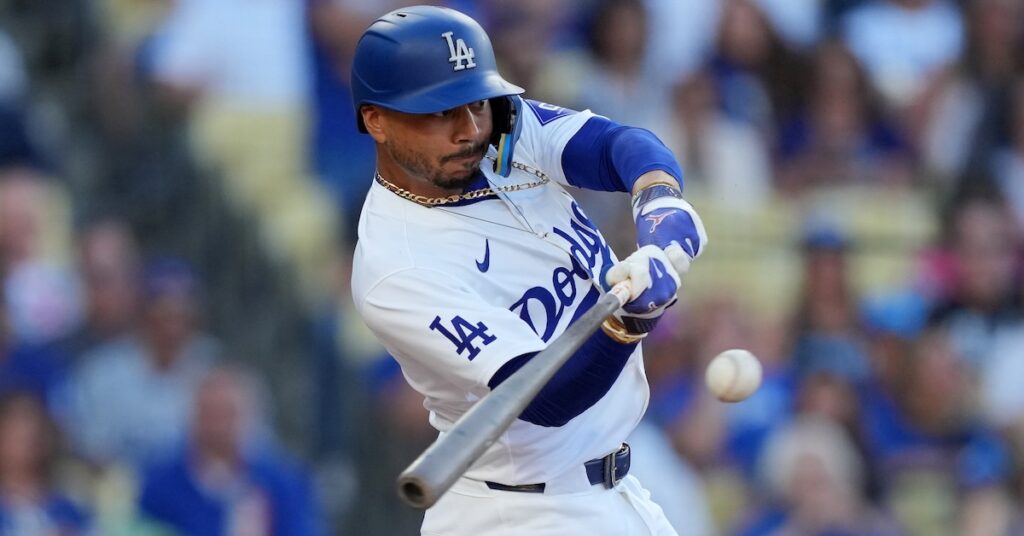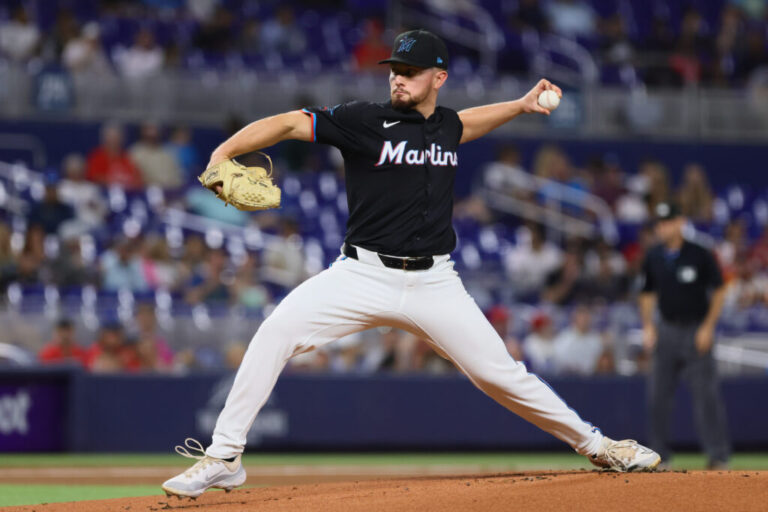

Do me favor. Don’t imagine trading Mookie Betts. Who would do that, anyway? Instead, imagine Mookie Betts trading Mookie Betts. That is to say, imagine Mookie Betts deciding to trade the current version of himself for a younger version of himself. Most of us would make that trade in a second – my younger self had so much hair and was already reading at a fifth-grade level! – but why would Mookie Betts make that trade? Coming into 2024, he had just put up a seven-win season while running a 166 wRC+, the second-best batting line of what should end up as a Hall of Fame career. That’s the ideal self, right there. No trades necessary.
From afar, Betts’s 2024 season was of a piece with the ones that preceded it. He put up his eighth-career 4-WAR season and ran a 141 wRC+, almost exactly in line with his career mark. But look at this:

Go ahead and ignore the short 2020 season, when Betts posted a low pull rate. All the numbers go up toward the second half of the graph before dipping back down in 2024. In a couple of major ways, Betts looked a lot less like what we’ve seen in this decade, and a lot more like what we saw back in the first few seasons of his career. He went back to striking out less, pulling the ball less, and hitting the ball significantly softer. In case that graph isn’t clear to you, let me show you the same numbers, this time split up into three chunks: 2014 through 2017, 2018 through 2023, and then just the 2024 season.

See the chunks? If those three metrics — Betts’ strikeout rate, hard-hit rate, and pull rate — are ringing some bells, it’s probably because I wrote about them back in May. At the time, I noticed that pitchers were doing their absolute best to pitch Betts away, away, away. Well, that trend continued throughout the season, and it certainly seems possible that it explains a lot of these numbers. Continuing with our theme, let’s take this in chunks. We’ll talk about the strikeout rate first because it’s the least dramatic.
Betts has never been anything but excellent at avoiding strikeouts. However, he had an 11% strikeout rate in 2024, and even by his own ridiculous standards, that was something. It was tied for the best mark of his career, it represented a nearly 30% drop-off from his 2023 rate, and it put him in the 98th percentile of all major league hitters. The thing is, his plate discipline didn’t change all that dramatically. He saw fewer pitches in the zone, which is a good way to avoid strikeouts, but he also had one of the higher chase rates of his career. The big difference was that he swung more often on the first pitch and he recorded one of the highest contact rates of his career. That’s a little odd, because chasing more normally leads to whiffing more. However, seeing more outside pitches could lead to more contact, as the ideal contact point for an outside pitch is further behind home plate, which gives the batter more time to react. As I mentioned, all of these numbers were within Betts’ career norms, but between the aggression, especially on the first pitch, and the higher chase rate, it seems safe to say that Betts was looking to put the ball in play a bit more often.
At the same time, Betts’ contact quality took an enormous dip. His hard-hit rate fell from 48.5% in 2023 all the way to 39.5%. That still left him fairly close to the league average, but it was one of the biggest drops in baseball, and the underlying numbers are even uglier. Betts’ 90th percentile exit velocity and his best speed (which throws out the weakest 50% of batted balls and then takes the average of the remaining 50%) represented career lows. The 90th percentile mark put him in the 27th percentile. This is not the direction in which you want to be trending.

As I noted back in May, Betts adjusted to the outside pitches by setting up closer to the plate. That can make it difficult to hit the inside pitch with authority, because you have less time to turn on it, but Betts’ contact quality was down across the board. Here’s his hard-hit rate on pitches in the zone:

The inner third definitely saw the biggest drop-off, but his hard-hit rate was down on pitches out over the plate too. That brings us to our third and final chunk. Betts ran a 34.3% pull rate, the lowest of his career and at least 10 percentage points lower than his rate in each of the three previous seasons. Here are spray heat maps for 2023 and 2024. Everything’s shifting away from left field and toward right field. It’s also shifting away from deep fly balls.

Betts has never been the strongest player in the league, but he’s always hit the ball hard, and he transformed himself into one of the game’s true masters at turning on the inside pitch and ripping it down the line or over the fence. In 2024, however, he traded that super power for the ability to spray line drives to all fields. It certainly seems like this was a response to the way he was being pitched. After all, it’s pretty hard to yank a pitch on the outside corner down the left field line. And if you’re not seeing pitches that you can yank to the pull side, then it no longer makes sense to build your whole approach around that goal.
I don’t want to overreact to a single season, let alone one in which Betts produced his typical fantastic offensive numbers — especially considering that Betts missed nearly two months with a fractured hand. This is one of those times when I really wish we had bat tracking data stretching back over the last several years. Betts had an average bat speed of 69.1 mph in 2024, which put him in just the 14th percentile, and I wish there were a way to know whether that was a big drop-off from previous seasons. He turned 32 last year, and just Tuesday, Tom Tango published an aging curve that makes it look like there’s a dramatic bat speed drop-off starting at 32. If you look at Betts’ spray charts and his contact rates, you get the sense that he just reworked his approach in order to make the most of the pitches he was seeing. However, the exit velocity numbers are such an extreme departure from his previous seasons. To some degree, they’re probably a symptom of that larger adjustment, but Betts’ bat may just be slower than it used to be.






